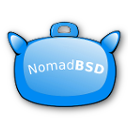Slackware で rEFInd を利用し複数の EFI ブートエントリを切り替える
UEFI な実験環境にごちゃぁっと OS が入っている場合に重宝します。
※ rEFInd は Intel Mac 専用というわけではなく、UEFI マザーな PC/AT 互換機で問題なく使えます。
本稿執筆における参考文献
UEFI dual or more boot using rEFInd - SlackDocs
https://docs.slackware.com/howtos:slackware_admin:uefi_triple_boot_with_refind_on_slackware
The rEFInd Boot Manager
http://www.rodsbooks.com/refind/
安全のために
・大切なデータのバックアップをとっていること
・ブート用 USB メディア等、ローダー破損によるブート不能時の復旧手段を持っていること
手順
- UEFI マシンへの Slackware インストール時に LILO ではなく ELILO を選択。
- SlackBuilds.org から rEFInd を導入。
- ルートで
/usr/share/refind-0.11.4/refind-installを実行。
※ 上記手順 3. はインストール済みのrEFInd のバージョンが 0.11.4 の場合
※ SlackBuilds.org の使い方はこちら(日本語の説明記事を書いてみました)。
注意点
EFI システムパーティションの容量が小さい、もしくは容量を使い切っている場合、F10 キーによるスクリーンショットが撮影出来なくなる場合があります。
複数のドライブがブート可能かつ EFI システムパーティション(ESP1)を持っている場合、OS のインストーラーや ELILO 及び rEFInd が正しくインストール操作を行えない場合があります。
パッケージ付属 README
**/usr/share/doc/refind-0.11.4/README.txt**
Brief Installation Instructions (Binary Package)
================================================
This is rEFInd, an EFI boot manager. The binary package includes the
following files and subdirectories:
File Description
----------------------------- -----------------------------
refind/refind_ia32.efi The main IA32 rEFInd binary
refind/refind_x64.efi The main x86-64 rEFInd binary
refind/refind.conf-sample A sample configuration file
refind/icons/ Subdirectory containing icons
refind/drivers_ia32/ Subdirectory containing IA32 drivers
refind/drivers_x64/ Subdirectory containing x86-64 drivers
keys/ Subdirectory containing MOKs
refind-install Linux/MacOS installation script
refind-mkdefault Script to make rEFInd the default
mkrlconf A script to create refind_linux.conf
mvrefind A script to move a rEFInd installation
README.txt This file
NEWS.txt A summary of program changes
LICENSE.txt The original rEFIt license
COPYING.txt The rEFInd license
CREDITS.txt Acknowledgments of code sources
docs/ Documentation in HTML format
The easiest way of installing rEFInd is generally to use the refind-install
script; however, you must be running under Linux or OS X to do this. If
you're using either of those OSes, simply typing "./refind-install" will
generally install rEFInd. If you have problems with this method, though,
you'll have to do a manual installation. The refind-install script supports
a number of options that you might want to use; consult the
docs/refind/installing.html file for details.
To install the binary package manually, you must first access your EFI
System Partition (ESP). You can then place the files from the refind
subdirectory in a subdirectory of the ESP's EFI directory. You may omit the
.efi binary for the type of computer you're NOT using, and you may
optionally rename the .efi file for the binary you are using. If this is an
initial installation, you should rename refind.conf-sample to refind.conf;
but if you're replacing an existing installation, you should leave your
existing refind.conf intact. The end result might include the following
files on the ESP:
EFI/refind/refind_x64.efi
EFI/refind/refind.conf
EFI/refind/icons/
Unfortunately, dropping the files in the ESP is not sufficient; as
described in the docs/refind/installing.html file, you must also tell your
EFI about rEFInd. Precisely how to do this varies with your OS or, if you
choose to do it through the EFI, your EFI implementation. In some cases you
may need to rename the EFI/refind directory as EFI/boot, and rename
refind_x86.efi to bootx64.efi (or refind_ia32.efi to bootia32.efi on 32-bit
systems). Consult the installing.html file for full details.
If you want to use any of the filesystem drivers, you must install them,
too. Creating a subdirectory of the rEFInd binary directory called
drivers_x64 (for x86-64 systems), drivers_ia32 (for x86 systems), or
drivers (for any architecture) and copying the drivers you want to this
location should do the trick. When you next launch it, rEFInd should load
the drivers, giving you access to the relevant filesystems.
Brief Installation Instructions (Source Package)
================================================
rEFInd source code can be obtained from
https://sourceforge.net/projects/refind/. Consult the BUILDING.txt file in
the source code package for build instructions. Once you've built the
source code, you can use the refind-install script to install the binaries
you've built. Alternatively, you can duplicate the directory tree described
above by copying the individual files and the icons directory to the ESP.
折りたたみは便利ですね。
**参考文献:折りたたみ**
details tag
https://www.w3schools.com/TAGS/tag_details.asp
summary tag
https://www.w3schools.com/TAGS/tag_summary.asp
div tag
https://www.w3schools.com/TAGS/tag_div.asp
collapsible markdown · GitHub
https://gist.github.com/joyrexus/16041f2426450e73f5df9391f7f7ae5f
Qiita Markdown で折りたたみを表現する方法
https://qiita.com/matagawa/items/31e26e9cd53c3e61ae07
[Qiita Markdown記法]ページ内リンク・注釈・折りたたみ等
https://qiita.com/aymikmts/items/71e550bf2c10f36883e9
Markdown記法 チートシート
https://qiita.com/Qiita/items/c686397e4a0f4f11683d
おまけ:Desktop 向け BSD ディストリ用アイコン
Desktop-oriented な BSD 向け。
rEFInd パッケージ内の os_○○○.png や各 OS のロゴから適当に作成。
著作権及び使用許諾は素材とした画像に準じます。
rEFInd のテーマに関しての詳細:
http://www.rodsbooks.com/refind/themes.html
おまけアイコンの使い方
ESP が /boot/efi にマウントされている場合、/boot/efi/EFI/ 以下のターゲット OS のフォルダ名と配置した /boot/efi/EFI/refind/icons/os_○○○.png の ○○○ を揃えることでカスタムロゴ画像を表示出来ました。
例:
/boot/efi/EFI/ghostbsd/
と
/boot/efi/EFI/refind/icons/os_ghostbsd.png
GhostBSD
Project Trident
NomadBSD

http://nomadbsd.org/
https://github.com/nomadbsd/NomadBSD/tree/master/nomad/Wallpapers
MidnightBSD

https://www.midnightbsd.org/
https://www.midnightbsd.org/art/
OS108
https://os108.org/
https://github.com/OS108/OS108/tree/master/OS108_logo
OpenBSD
https://www.openbsd.org/
https://www.openbsd.org/art4.html
https://commons.wikimedia.org/wiki/File:Poisson-lune.jpg
DragonFlyBSD
https://www.dragonflybsd.org/
https://www.dragonflybsd.org/images/
https://commons.wikimedia.org/wiki/File:Nannophya_pygmaea_male.JPG





